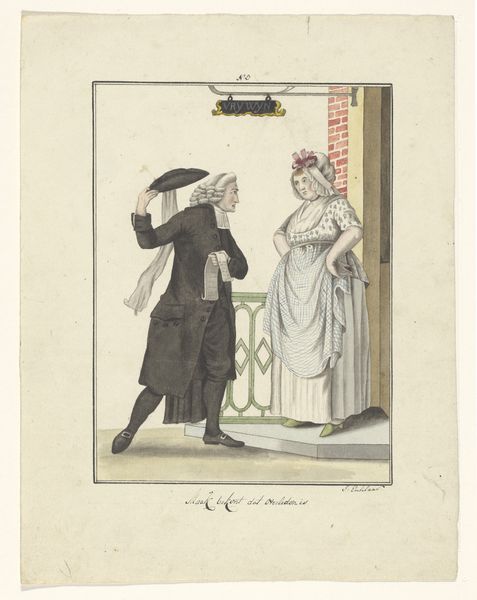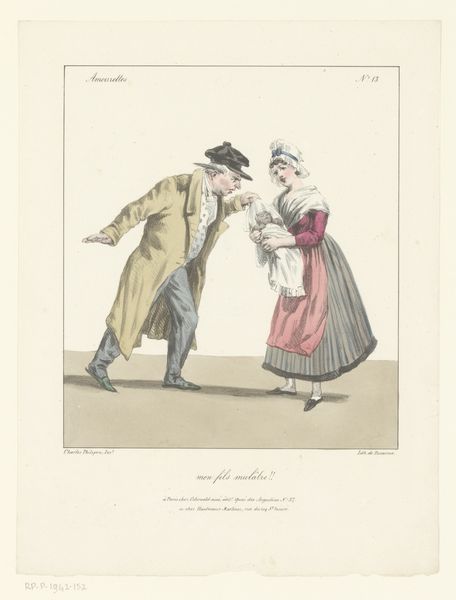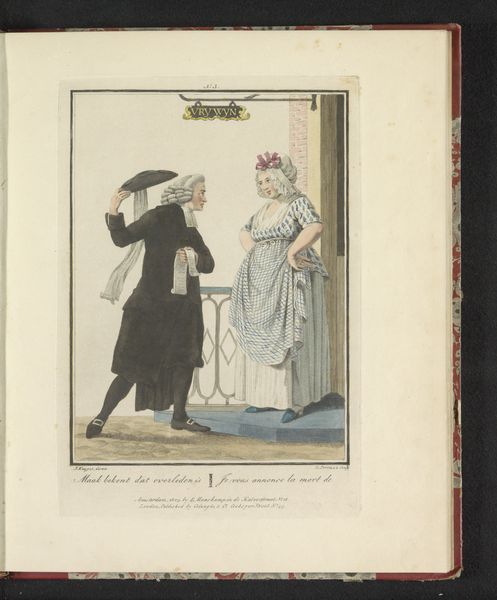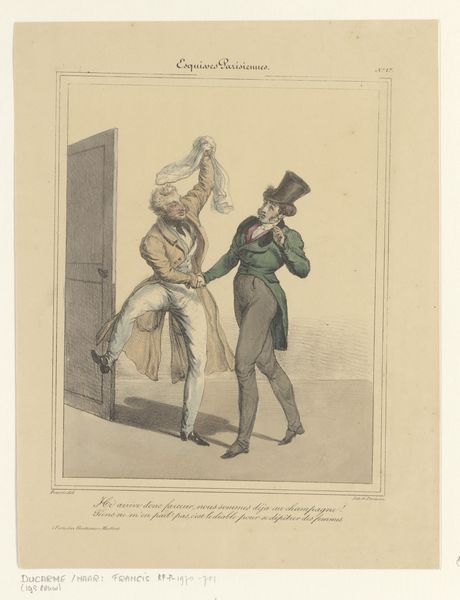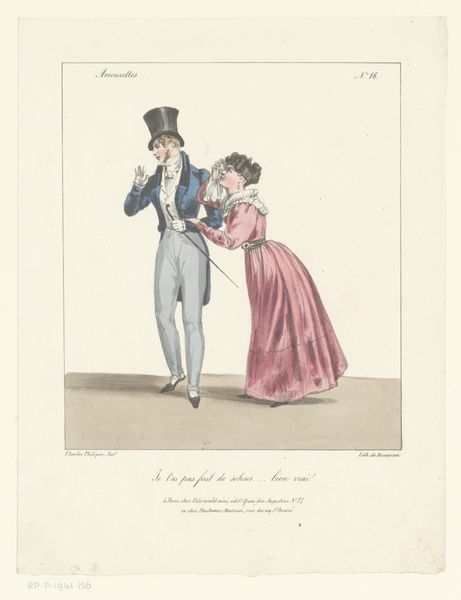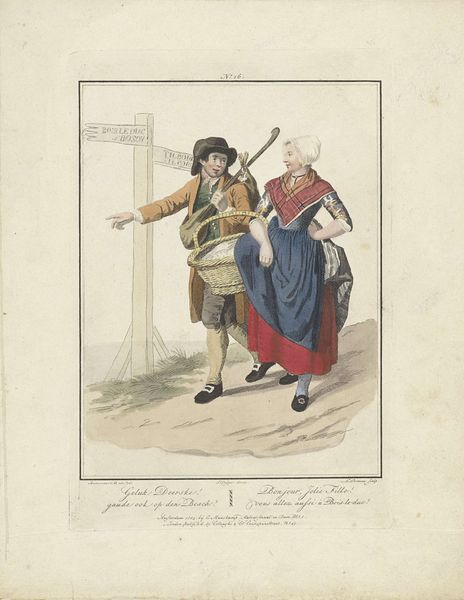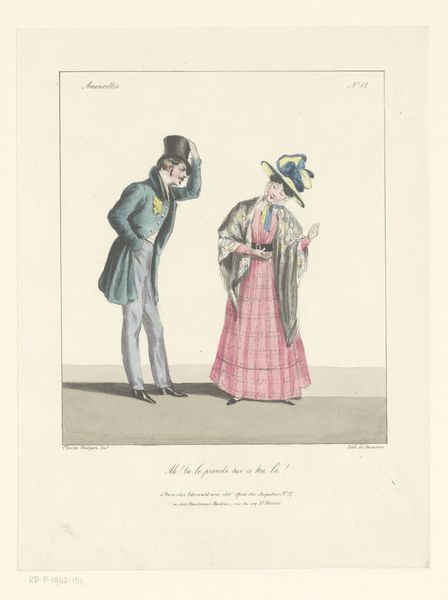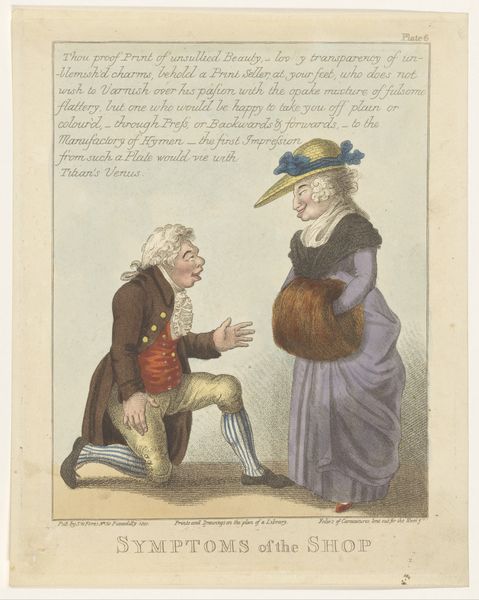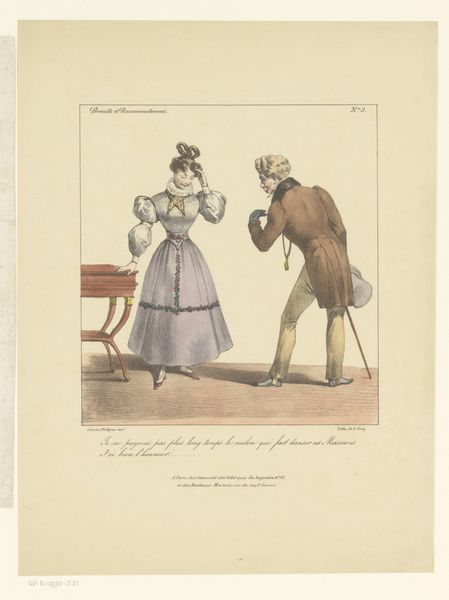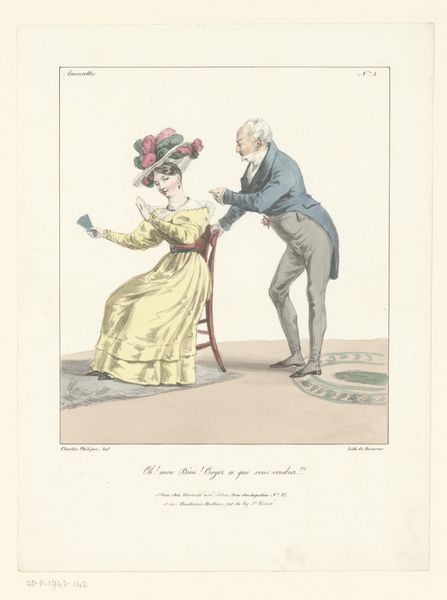
print, etching
#
portrait
#
neoclacissism
# print
#
etching
#
caricature
#
historical fashion
#
genre-painting
#
history-painting
Dimensions: height 232 mm, width 156 mm
Copyright: Rijks Museum: Open Domain
Editor: We’re looking at “Aanspreker,” an etching by Ludwig Gottlieb Portman from 1811, housed in the Rijksmuseum. The mood is… surprisingly humorous for a scene depicting a death announcement? What do you make of it? Curator: The humour stems from the subversion of societal norms and power dynamics of the era. It appears we have a ‘aanspreker’—someone who announces deaths— engaging with a woman. Considering its creation in 1811, how might the societal roles of men and women influence your understanding of this print as commentary? Editor: Well, he seems to be in a position of authority with the wig and formal attire. The woman appears more domestically situated. Is the humour in challenging that dynamic? Curator: Precisely! Portman, through caricature, offers a glimpse into the social fabric, questioning the rigid class and gender structures. Note the flamboyant gestures versus the woman's more grounded stance, and what could this juxtaposition be conveying about performativity and sincerity in grief. Who had the space for the performative during that period and why? Editor: So it's not just about death, but about how different members of society experienced and expressed grief. Class impacts gender. I’d missed the deeper connection there at first. Curator: And it begs the question of whether caricature always punches ‘up.’ Does the humour here also inadvertently reinforce existing social hierarchies, even as it critiques them? Editor: That gives me a lot to think about. I came in thinking this was simply a funny historical scene, but it reflects deeper tensions around gender and class performance. Thanks for the insight. Curator: It shows the potential of visual culture to reveal unspoken assumptions of a period, it encourages us to reflect on these societal frameworks both in the past and today.
Comments
No comments
Be the first to comment and join the conversation on the ultimate creative platform.
